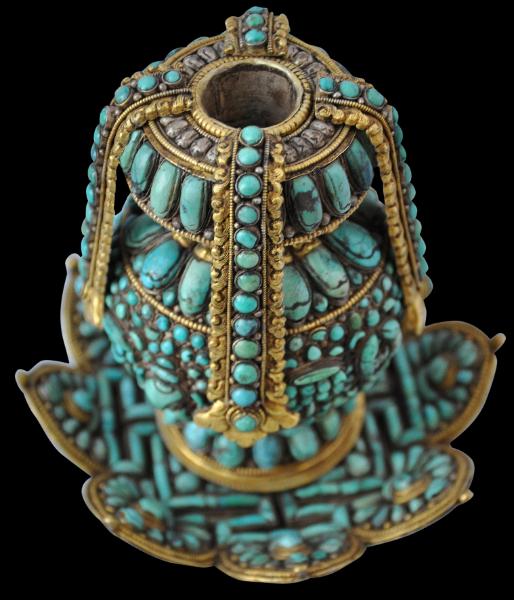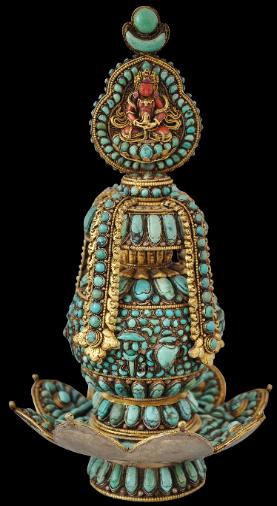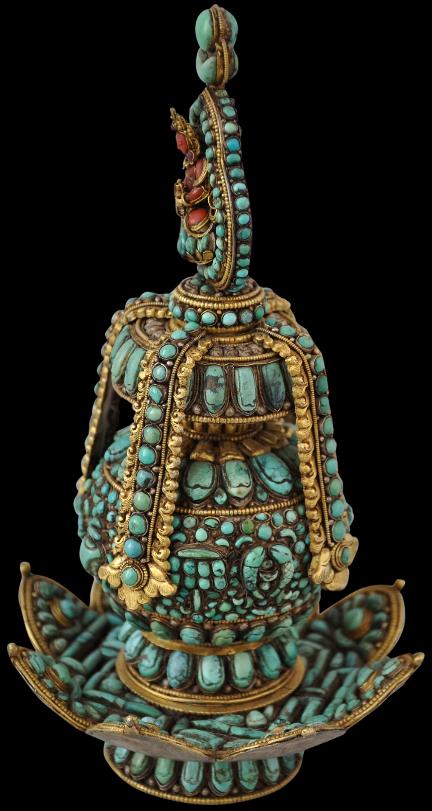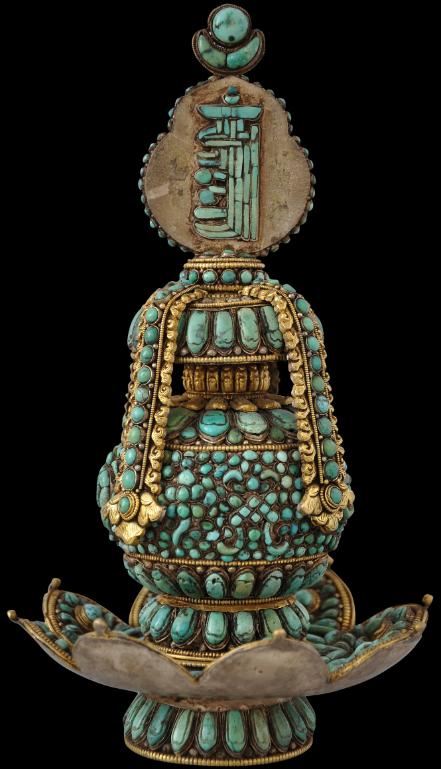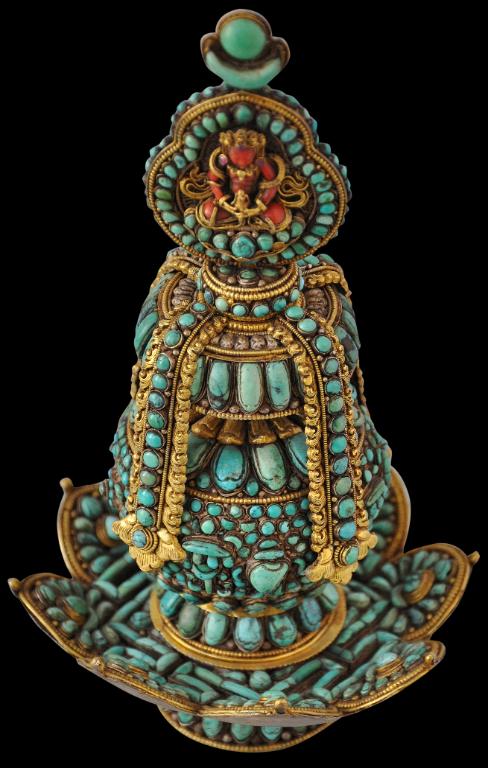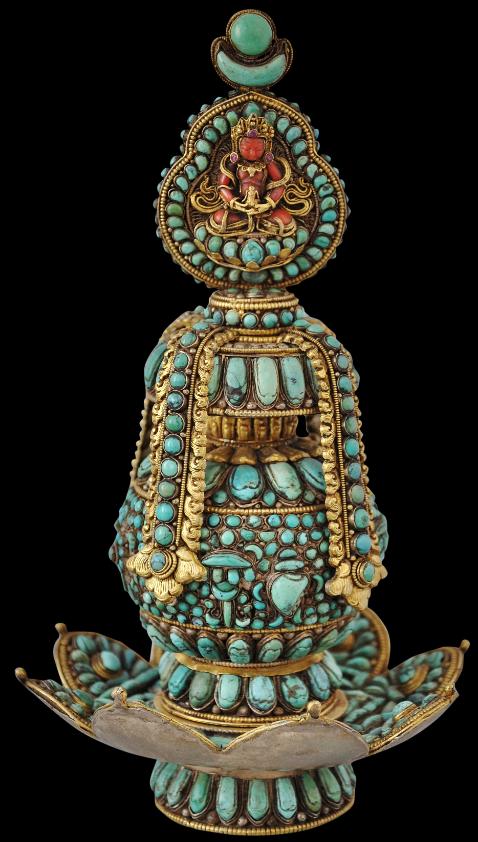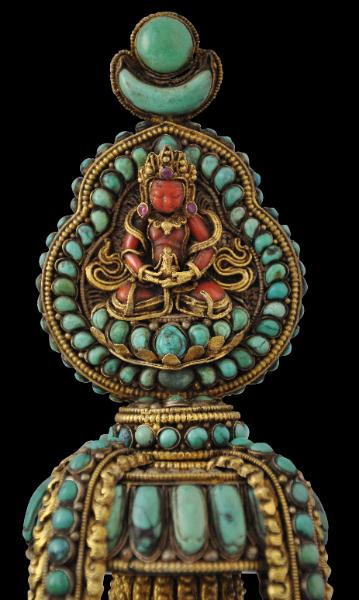
Tibetan Nepalese Longevity Vase
Silver & Gilt Longevity Vase Inset with Turquoise, Coral & Other Semi-Precious Stones
Nepal or Tibet
early 20th century
height: 20.5cm, weight: 512g
This jewel-covered vase is of thick, beaten silver and is almost entirely covered with shaped turquoise tiles each within a box setting. The exposed borders of silver have been engraved, chased, pearled and gilded (gold plated).
The vase itself has a globular body. Within lotus petal borders marked out in turquoise there is a central frieze of Buddhistic symbols, again marked out in shaped turquoise. There are double fish symbols, endless knots and so on.
The stopper with a sun and moon finial has a large medallion decorated with a crowned Amitayus made of shaped coral pieces with rose-cut ruby earrings, set amid gilded silver filigree and contained within a border of turquoise cabochons. (Amitayus is the name usually used for Amitabha, an emanation of the Buddha, when associated with longevity; and red is the colour used to symbolise Amitabha hence the use of coral. Longevity vases also are seen as symbols of Amitayas.) The image sits in a meditative posture and holds a longevity vase on his lap. The back of the stopper medallion is decorated with a
kalachakra ideogram fashioned from turquoise. (The kalachakra is composed of ten powerful mantra syllables.)
The top of the vase is adorned with four cascading leaf-shaped pendants embellished with turquoise cabochons. These symbolise the overflowing of the nectar of immortality, as well as the Buddhas of the four directions with Amitayas at the centre.
The vase is fixed to a saucer in the form of an open lotus bloom of eight petals, the interior of which also is covered with turquoise. The saucer sits on a slightly flared foot with turquoise plaques shaped as lotus petals.
Longevity or long life vases have no spout and are the central vases used in rituals to visualise the mandala and its divine occupants, which are then dissolved into the waters of the vase. They were made for Tibetan longevity and prosperity rituals, the attached jewels being purposeful for the notion that jewels attract jewels, including the jewel of long life.
The vase most probably is the work of a Newar craftsman working for a Tibetan client. The Newar are the dominant ethnic group of the Kathmandu Valley. Metalwork and jewellery making was among their specialisations. Newar craftsmen plied their trade across the Himalayas and many items classed as Tibetan are in fact of Newari origin.
This vase is in excellent condition. There are no losses and no repairs. Overall, it is an outstanding example of Himalayan gem-setting and silversmithing.
References
Clarke, J., Jewellery of Tibet and the Himalayas, V&A Publications, 2004.
Thurman, R., & D. Weldon,
Sacred Symbols: The Ritual Art of Tibet, Sotheby’s/Rossi & Rossi, 1999.
Beer, R.,
The Encyclopedia of Tibetan Symbols and Motifs, Serindia, 2004.
Provenance
private collection, London, UK.
Inventory no.: 1594
SOLD

